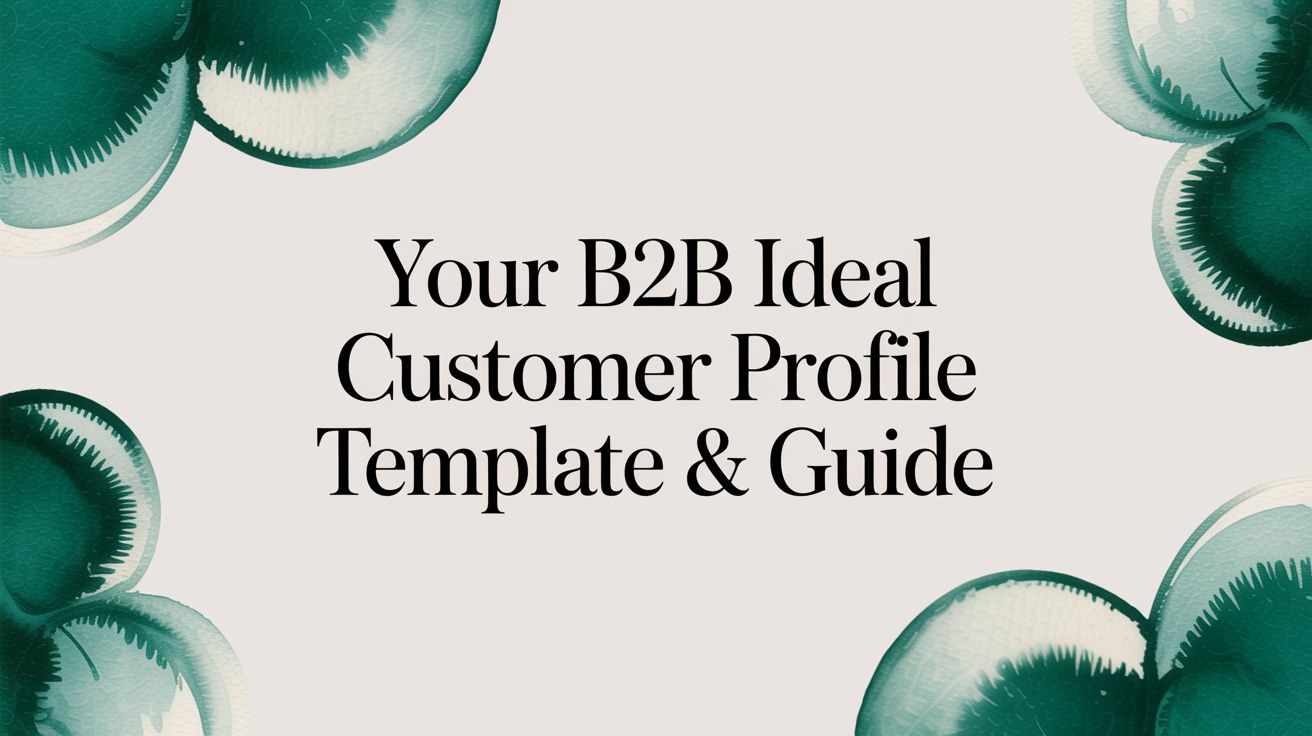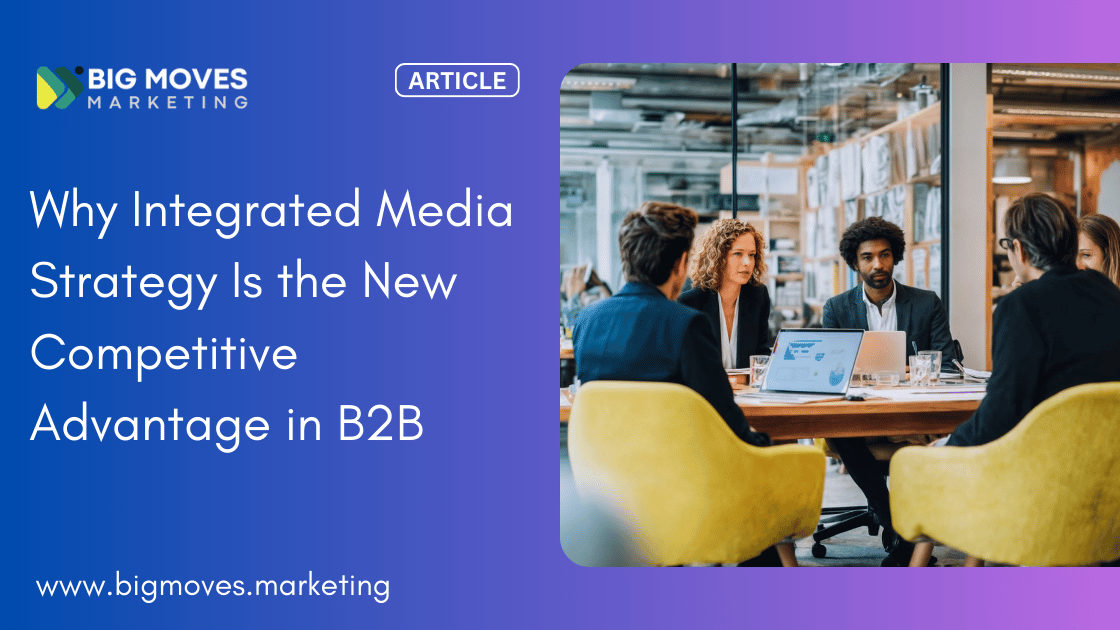AI Creates Massive Impact When Your B2B SaaS Strategy Is On Point
July 10, 2025

How AI Creates Massive Impact When Your B2B SaaS Strategy Is On Point
Artificial intelligence isn’t a magic bullet—it amplifies what you already do. For B2B SaaS startups and their founders, AI becomes transformative only when your go-to-market foundation is rock-solid. Let’s unpack exactly why that’s true—and how to make AI work as your turbocharger, not just a fancy accessory.
🔍 Part I: The Myth of “Plug‑and‑Play AI” in SaaS Startups
Unrealistic Hype Meets Strategic Reality
AI tools promise fast lead gen, hyper-personalisation, predictive pipeline forecasting, and more. But for SaaS startups, success isn’t about the tool—it’s about how strategically you use it.
Jumping into AI with vague ICPs or weak messaging is like buying a Ferrari when you don’t know how to drive. AI may give speed, but you’re heading nowhere. A recent UK–EU study shows 64% of B2B revenue leaders see ROI on AI within 12 months—but only if AI is thoughtfully integrated into existing revenue teams .
🧩 Part II: What “Sound Strategy” Means for SaaS Founders
Before AI adds value, your strategy must strike solid chords in five areas:
1.
Clear, Battle‑Tested ICPs
Define precise segments: by vertical, company size, pain point, buying stage, and tech stack. Tools like 6sense or MadKudu get powerful only with clean, highly specific data. Case studies show startups increasing closed-won opportunities 20–40% by refining ICPs first ().
2.
Differentiated Positioning
Your messaging must answer:
- Who is this for?
- What job does it do?
- Why better than competitors?
Take Bloomreach—they evolved positioning into a post-cookie world, embedding AI-powered site search and personalized content to stand out . Without that clarity, AI-generated copy or chatbots fall flat.
3.
Defined GTM Motion
High-touch enterprise? Product-led growth? Channels?
Your GTM style defines AI’s role:
- Use predictive scoring tools for enterprise ICPs.
- Use onboarding AI for PLG environments.
Automated outreach without a funnel? No thanks.
4.
Revenue‑Aligned KPIs
Chase MQLs, and you’ll gather vanity; chase ARR, and you’ll get ROI. Firms achieving 15× ROI with AI (e.g., Wrike) linked AI campaigns directly to net-new revenue, $1.6M-plus by plugging AI into the funnel .
5.
Team Alignment & Discipline
Disjointed sales and marketing teams cause AI to drown in noise. UK/EU data shows 86% of bid teams see AI as strategic—but only when sales, marketing, and proposals share clear SLA and data unity .
🚀 Part III: AI at Work in B2B SaaS: Real Wins, Real Examples
Here are five game-changing scenarios where AI amplifies a sound B2B SaaS strategy:
1.
Predictive Lead Scoring
A fintech SaaS increased qualified leads by 215% after layering AI on top of sharp ICPs and ABM segmentation . Other B2B companies saw 25% higher conversion and 30% shorter sales cycles with AI lead scoring .
2.
Hyper‑Personalized Outreach
Bill.com uses demo-tailoring and data-specific flows to resonate with distinct personas . HubSpot leverages friction-based signup questions to collect valuable info and personalize onboarding . One BlueShift client saw a 400% surge in engagement using cross-channel AI personalization .
3.
Smart Pipeline Forecasting
LinkedIn tested an AI-powered account prioritizer and saw an 8% uplift in renewal bookings on one of their enterprise lines . This only works when CRM stages are consistently tracked and data sources are clean.
4.
On‑Demand Sales Enablement
Companies like Docket are embedding AI agents as virtual sales engineers—reducing overhead and boosting win rates by 12% with sub-3-second insights from unified knowledge lakes .
5.
Content & SEO For “Google AI Mode”
Google’s “AI Mode” surfaces summaries instead of SERP links. B2B SaaS brands that produce structured, insight‑driven content—precisely fit for their ICP—stand ahead. Kalungi emphasizes: “Visibility now belongs to brands that teach best” .
🛠️ Part IV: Founder’s Playbook: 7 Steps to AI‑Powered Growth
Step-by-step guide to layer AI into your SaaS flywheel:
- Crystallize Your ICP & Personas
- Deep-dive into past top customers.
- Segment by pain, tech, and buying signals.
- Positioning Workshop
- Define your point of view.
- Create clear POV decks for sales, marketing, and investors.
- Blueprint Your Buyer Flow
- Map each touchpoint.
- Pinpoint where AI can help (e.g. chatbots post-demo signup).
- Align GTM Teams
- Set SLA on lead handoff.
- Build shared dashboards with predictive scoring, pipeline coverage.
- Hygiene + Enrich = Clean Data
- Move leads through standard stages.
- Automate enrichment with tools like snapADDY .
- Run a Pilot (1 KPI at a Time)
- Test lead scoring → review hit rate.
- Test AI outreach → measure reply/meet rates.
- Iterate & Systematize
- Feed results back into models.
- Normalize routines and layer AI into playbooks.
🧠 Part V: Strategy First, AI as Your Accelerator
For B2B SaaS founders, AI only magnifies: strategy, process, execution. The companies that scale fastest are those that:
- Know exactly who they serve
- Communicate why they’re better
- Run a repeatable GTM flywheel
- Use data as their system’s DNA
Then AI becomes growth’s engine, not lab experiments.
✔️ Real Startups Doing It
Wrike
AI chatbots + outreach delivered 15× ROI in one campaign
BlueShift client
Used AI personalization across channels → +400% engagement ()
FinTech SaaS
215% rise in qualified leads with AI lead scoring ()
TL;DR for SaaS Founders:
- Strategy is the foundation—AI just amplifies it.
- Nail ICP, positioning, GTM, metrics, team alignment.
- Pilot with predictive scoring or AI chatbots.
- Monitor impact on pipeline, not vanity metrics.
- Scale with consistent execution and AI infusion.
A sound strategy ensures AI magnifies growth for real—so do the groundwork first, and let AI be the rocket fuel.
%20-%20Alternate.svg)


%20-%20white.svg)